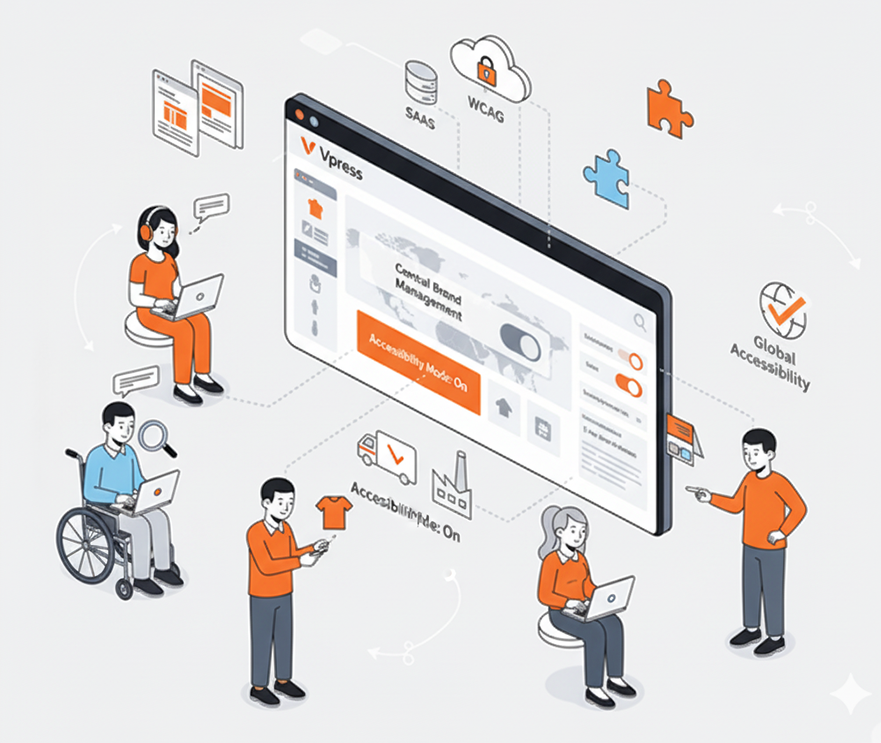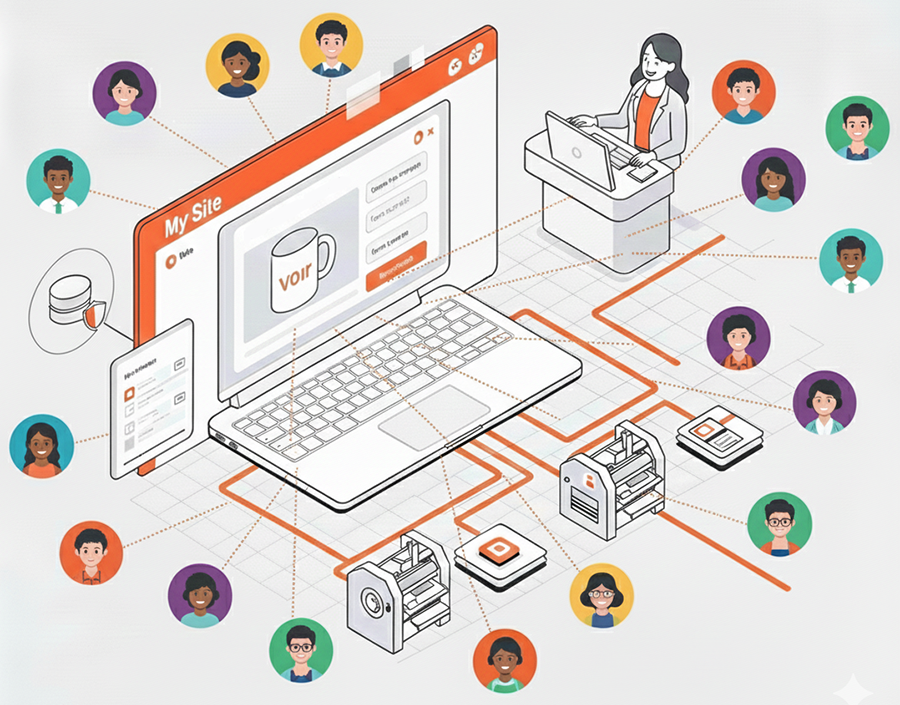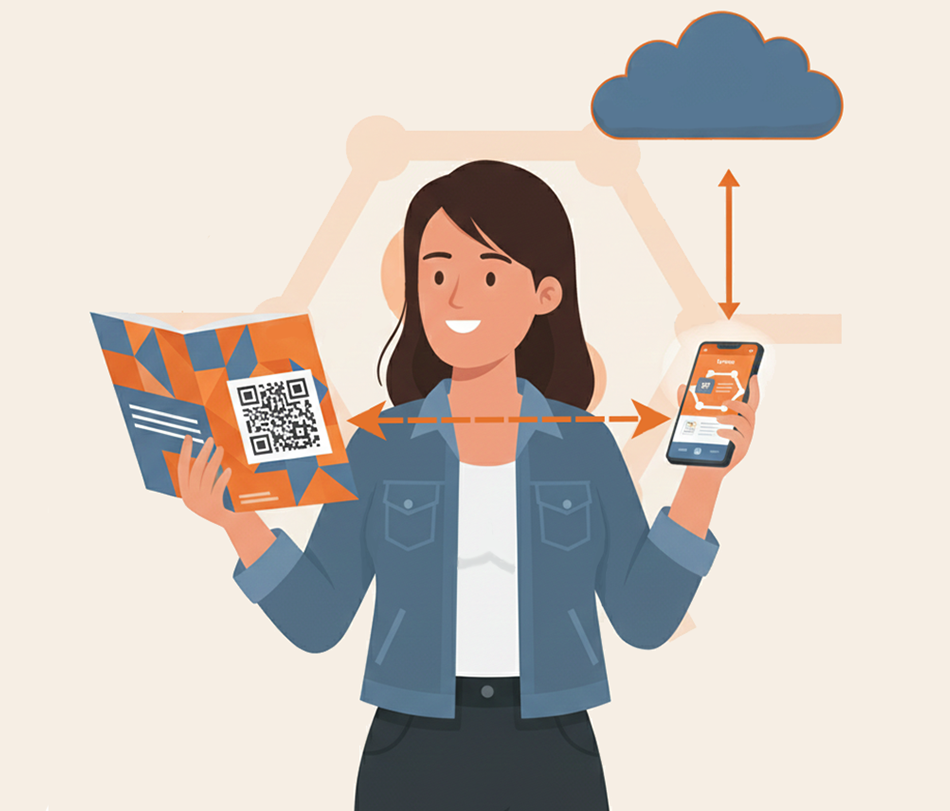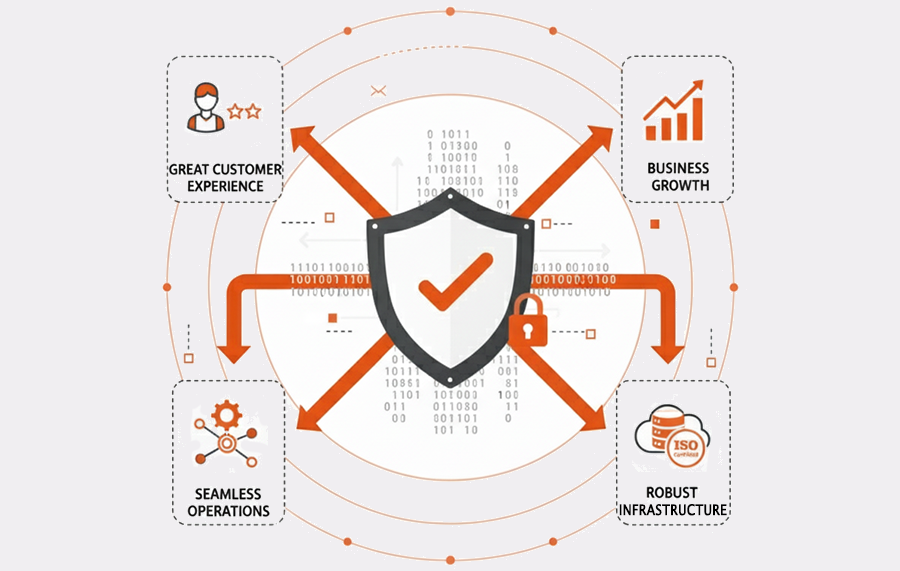3 October 2025
Beyond the Visual: Why Accessible Web-to-Print is a Corporate Responsibility and a Critical Business Choice

Vpress: Partnering with Procurement & Marketing Leaders
In today's digital-first economy, the tools businesses use for mission-critical functions must be accessible to every single user, without exception. This is especially true for web-to-print applications, which serve everyone from the marketing team and HR, to individual employees across the organisation ordering essential materials.
At Vpress, we believe accessibility is not a niche feature, but a foundational requirement. We've dedicated significant resources to developing an industry-leading web-to-print application that can be used effectively by everyone, including the millions of people living with a visual disability.
The Overlooked Imperative: Why Accessibility is a Procurement Factor
When choosing a web-to-print partner, many corporate buyers focus on templates, pricing, and integration. But there’s a critical question that directly impacts organisational efficiency and legal compliance that often goes unasked: Can all of my users actually use it?
Globally, the scale of visual impairment is significant. According to the World Health Organisation, at least 2.2 billion people have a near or distance vision impairment. This means a substantial portion of the global workforce, customer base, and wider community may encounter barriers with inaccessible digital tools. For your organisation, this translates into a large segment of potential users who could be excluded if your web-to-print solution isn't universally designed.
The decision to adopt an accessible platform is a critical business choice for several reasons:
-
Ensuring Total Workforce Engagement: If a single employee—due to a visual disability—cannot independently order business cards or marketing collateral, the process breaks down. An accessible platform guarantees that every member of your staff can participate fully in corporate ordering workflows.
-
Mitigating Risk & Demonstrating Compliance: While the focus of this blog is on genuine care, the reality is that major corporates need to meet robust inclusion standards. Choosing an accessible solution provides confidence that your B2B tools align with modern disability and equality regulations.
The Universal Principle
The power of the Web is in its universality. Access by everyone regardless of disability is an essential aspect.
— Tim Berners-Lee, Inventor of the World Wide Web

The Strategic Advantage: Accessibility and Brand Trust
For our corporate clients, the return on investment (ROI) in accessibility is seen in two key areas that are highly searched for by procurement teams:
-
Brand Reputation & Values: Partnering with a genuinely inclusive platform demonstrates a commitment to Diversity, Equity, and Inclusion (DE&I) values. This is an increasing expectation for modern corporate procurement and helps protect your brand's image.
-
A Truly Universal Solution: Features that improve accessibility also dramatically improve overall usability for all users. Clear keyboard navigation, high-contrast colours, and a logical structure make the ordering process faster and less error-prone for everyone, regardless of ability.
Corporate Insight:
In the UK alone, over two million people are living with sight loss that is severe enough to impact their daily lives. By selecting a fully accessible web-to-print solution, you ensure your company is inclusive and maximises the productivity of its entire workforce.
Built for Everyone: Vpress’s Genuine Commitment to Visual Accessibility
Our development team has worked tirelessly to ensure the Coreprint application is fully functional and intuitive for users relying on assistive technologies. We understand that a web-to-print application is only useful if every user can successfully navigate, customise, and place an order.
This commitment has led to our platform being trusted and adopted by some of the UK's most prominent charities and organisations dedicated to supporting individuals with visual impairments. They have chosen our application because it meets their rigorous standards for usability and inclusivity, allowing their teams to manage print assets with confidence and independence.
Here is a glimpse of the technical features that define our accessible design:
- Full Screen Reader Compatibility : Proper use of ARIA attributes and semantic HTML ensures that popular screen readers can correctly interpret the page structure, reading out form fields, buttons, and design elements in a logical order.
- Total Keyboard Navigation : The entire application, from login to checkout, can be operated using only the Tab and Enter keys, without the need for a mouse. This is essential for users with visual disabilities and motor impairments.
- Optimised Colour Contrast : We strictly adhere to WCAG Level AA guidelines for colour contrast, ensuring text and interactive elements are clearly legible for users with low vision or colour blindness.
- Logical Content Structure : Our platform uses clear, hierarchical heading structures and proper tagging, allowing users to "skim" a page using their screen reader and quickly jump to relevant sections.
Why We Don't Treat This as a Tick-Box Exercise
At Vpress, we refuse to treat accessibility as a simple feature to check off. We know this is a continuous responsibility, not a destination.
The True Measure of Improvement
How many opportunities do we have to dramatically improve people’s lives just by doing our job a little better?
— Steve Krug, UX Author & Consultant
While formal accreditations can be useful, our primary focus is on the lived experience of our users. We continuously test, gather feedback, and make improvements to ensure our product is genuinely usable and not just technically compliant. Our goal is to meet and exceed global accessibility standards to ensure our web-to-print platform is truly inclusive and reliable for your corporate users.
Take the Next Step: Invest in an Inclusive Platform
When you are searching for the right web-to-print partner, you are making a decision that impacts every single user in your organisation.
Demand a platform that is truly inclusive. Demand a platform that has a proven track record of acceptance by organisations that champion visual disability support.
If you are seeking an industry-leading web-to-print application that provides superior usability, reduces friction, and aligns with your corporate values, it’s time to talk to Vpress.
Ready for Accessible Web-to-Print?
Contact Us Today for a Demo and See Why Our Accessible Web-to-Print is the Right Choice.
Frequently Asked Questions
What does "accessible web-to-print" mean for my business?
Accessible web-to-print means your online print ordering platform is designed and developed so that everyone in your organisation can use it effectively, including individuals with visual disabilities who rely on assistive technologies like screen readers. It ensures compliance, promotes inclusivity, and maximises efficiency across your entire workforce.
Why is accessibility in web-to-print important for corporate procurement?
For corporate procurement, choosing an accessible web-to-print solution is crucial for several reasons: it ensures your organisation meets modern DE&I (Diversity, Equity, and Inclusion) standards, minimises potential legal risks related to digital accessibility, and guarantees that all employees can independently manage their print needs, thereby reducing bottlenecks and increasing productivity.
Does Vpress's Coreprint application meet international accessibility standards?
Yes, Vpress's Coreprint application is developed with a strong adherence to international accessibility guidelines, particularly the Web Content Accessibility Guidelines (WCAG) Level AA. Our focus is on continuous improvement and real-world usability, ensuring our platform is genuinely inclusive and functional for users with visual impairments.
How does Coreprint specifically support users with visual disabilities?
Coreprint supports users with visual disabilities through features like full screen reader compatibility (using ARIA attributes and semantic HTML), complete keyboard navigation (allowing users to operate the entire application without a mouse), optimised colour contrast for readability, and a logical content structure for easy navigation by assistive technologies.
Is an accessible web-to-print platform only beneficial for users with disabilities?
Not at all! While primarily designed to empower users with disabilities, accessible design principles lead to a more intuitive and user-friendly experience for all users. Features like clear navigation, high contrast, and keyboard shortcuts benefit everyone by making the platform more efficient, less prone to errors, and easier to use on various devices and conditions.
We don't have formal accreditation for accessibility. How can we ensure our chosen web-to-print partner genuinely cares about it?
While accreditations can be indicators, a partner's true commitment lies in their development philosophy and user feedback. Look for a partner that explicitly details their accessibility features, demonstrates ongoing development and testing, and can share how their platform has been successfully adopted by organisations known for their high accessibility standards. Vpress prides itself on this proactive, user-centric approach.
How can I learn more or see Coreprint's accessibility in action?
We invite you to contact us for a personalised demo of the Coreprint web-to-print application. During the demo, we can specifically showcase our accessibility features and discuss how they can benefit your organisation and its diverse users.
Beyond the Visual: Why Accessible Web-to-Print is a Corporate Responsibility and a Critical Business Choice
Table of contents
Share this article


